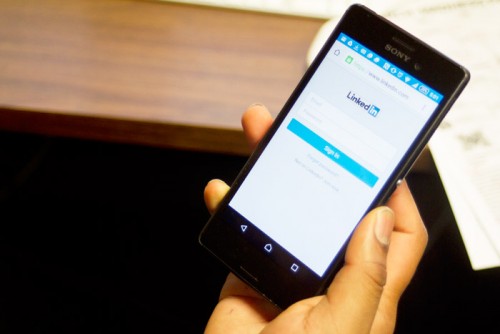LinkedIn has become a platform on which thousands of users are able to browse for jobs, apply for employment, and connect with work-related contacts. In addition to beefing up one’s profile with relevant skills and experiences, an important element to consider is that which draws the eye immediately: The profile picture.
So how important is this photo? According to research published by LinkedIn, profiles with photos are reviewed seven times more often than those without. A profile with a photo can seem like a more complete and polished profile in comparison to seemingly bare profiles without them.
Additionally, numerous studies, such as one out of Karolinska Institute in Stockholm, Sweden, have concluded that facial recognition is one of our most developed perceptual skills; it can affect how we judge each other to be trustworthy, aggressive, or competent—all important qualities considered when scouting out potential employees. Bottom line: Your photo is a crucial element of the profile that informs how employers will judge your candidacy.
At the same time, certain photos may actually do a disservice to the user if not chosen appropriately. There are certain LinkedIn photo faux-pas: Photos of users partying, group shots where the user can’t be identified (your face should generally take up to 60 per cent of the photo), ‘selfies,’ and low-quality or outdated pictures. Once these traps have been cleared, there may be more nuance in the types of photos recommended to each individual.
Like any form of social media, LinkedIn is a powerful tool for job-seekers to brand themselves. In order to strategically market yourself, it is important to figure out what kind of audience you are appealing to, and from there, to define the message you want your profile to send.
“Obviously [the photo is] going to be relevant to the field you’re applying to,” Catherine Stace, career advisor at McGill Career Planning Service (CaPS), said. “But for a standard, regular job—or corporate environment—it’s a typical headshot with a collared shirt [and] not with a busy background.”
For other professions, however, there may be more leeway.
“If you’re going to be a researcher in Antarctica, probably the headshot-with-the-suit won’t be appealing—it would be more of a field shot,” Stace said. “Always think of what’s the most appropriate thing.”
Many users may want to brand themselves in a more unique way than with a simple head shot. Nat Carson, U3 Management, is a photographer who runs his own photography business. He noted that some clients opt for photos that are more personalized: A friend of his who is a wood-worker, for example, took his photo in his woodshop holding props he would traditionally use in his craft. Carson himself has a portrait in the outdoors, because this is a big part of his identity that he wants employers to recognize immediately.
“I think [a good LinkedIn headshot is] all about trying to make the person’s personality shine through in a photo,” said Carson. “Trying to give someone some character [….] And, of course, it has to be a representative likeness to the person as well, so the employer will recognize you and can start putting a face to your qualities.”
Ultimately, the mantra ‘Dress for the job you want, not the job you have’ is a guiding principle when choosing a LinkedIn photo.
“This is your professional networking site; it’s not Facebook or any of those other spaces where you’re trying to make friends with people or be part of a social group,” Stace said. “You’re trying to fit into the work atmosphere of the field you’re [pursuing]. So who looks like the person who belongs in the office or in the field […] that’s what you’re looking for.”
For students looking to spiff up their LinkedIn profiles, there are many resources available on and around the McGill campus. A quick browse of Facebook groups for McGill students, such as Free & For Sale or Jobs & Internships, reveals many student photographers who will lend their photography services at a more affordable rate than other professional businesses. Another option is PhotoFund, a student-run, non-profit organization founded by a McGill student, Derek Liu. One hundred per cent of the organization’s proceeds go to the Herbie Fund, a branch of the SickKid’s foundation in Toronto. Many of these services will edit photos after they have been taken, so users can be sure to put their best face forward when presenting themselves to employers.









Pingback: Picture Perfect: Crafting your best LinkedIn photo – Turning Pixels Into Gold